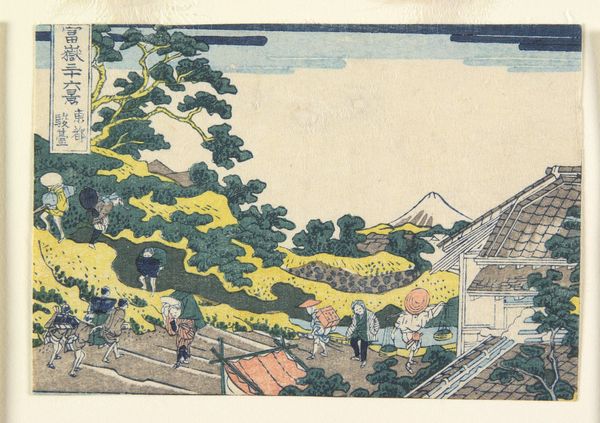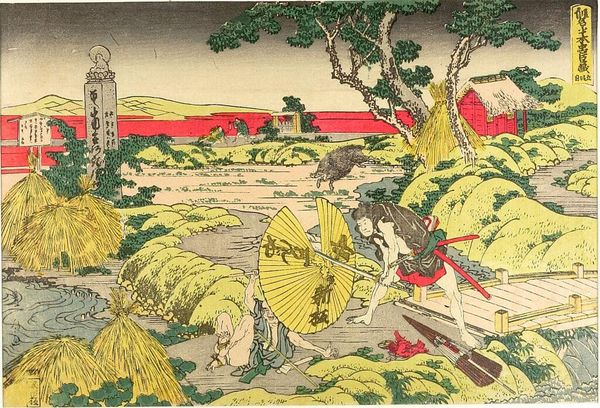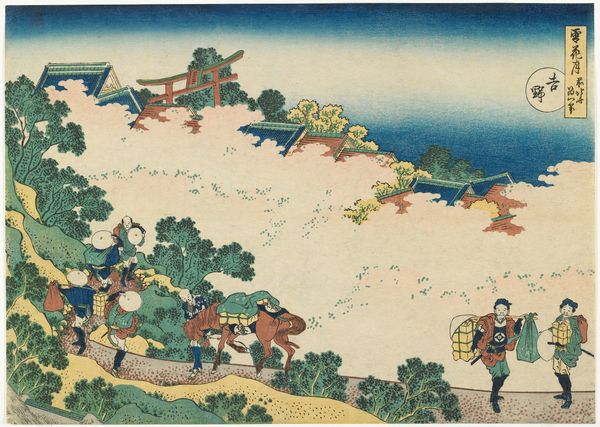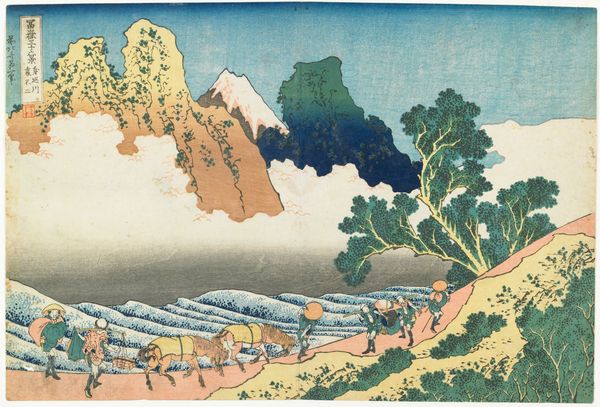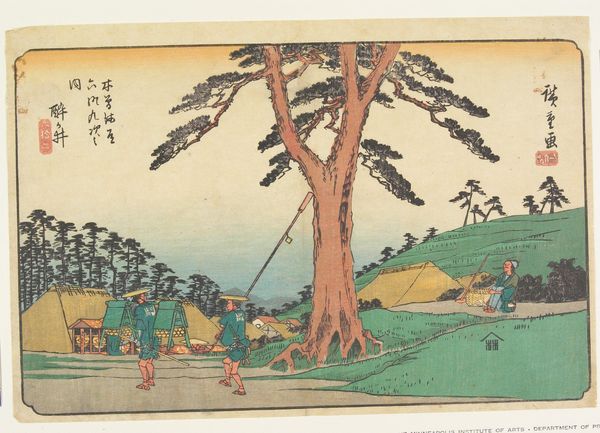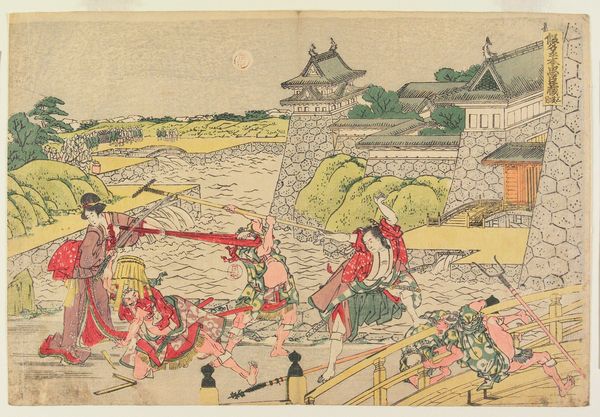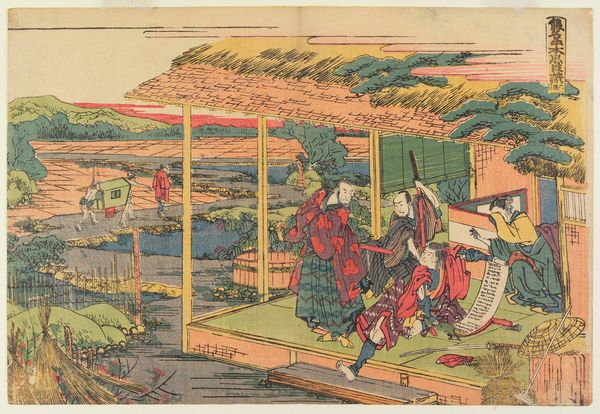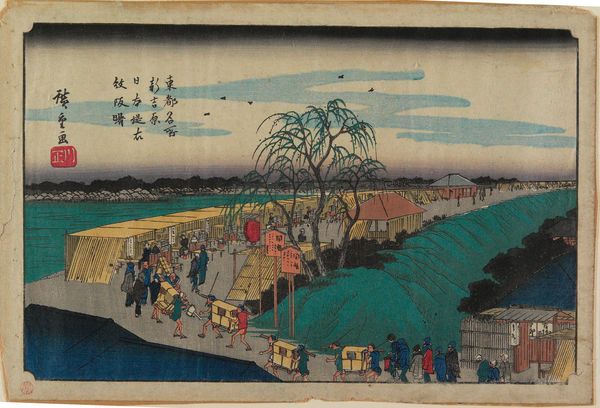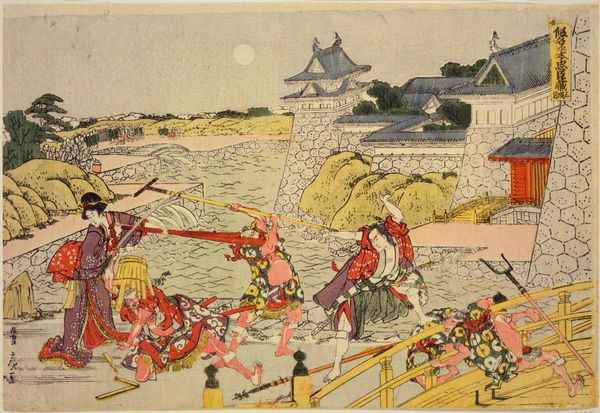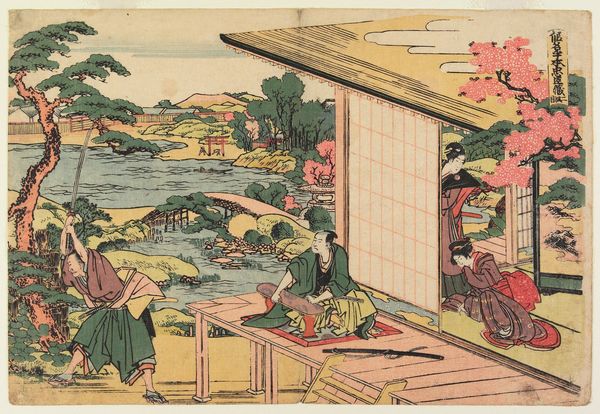
print, ink, woodblock-print
#
narrative-art
# print
#
asian-art
#
landscape
#
ukiyo-e
#
japan
#
figuration
#
ink
#
woodblock-print
Dimensions: 10 1/8 × 15 in. (25.7 × 38.1 cm) (image, sheet, horizontal ōban)
Copyright: Public Domain
Curator: Hokusai's "Act V," circa 1806, immediately strikes me as chaotic. The figures, compressed within this flooded landscape, exhibit a stark dynamic contrast. What's your initial perspective? Editor: Chaotic, indeed. The sheer density of detail, all those swirling lines! And I'm struck by the apparent tension between labor and leisure represented in the figures here—their clothing, activities. Curator: Absolutely. We see the convergence of ink and woodblock print, the medium contributing significantly to the linear emphasis defining forms and delineating space. Note how the wood grain itself interacts with the landscape. The interplay of figure and ground also establishes a powerful narrative. Editor: Thinking about materiality, it's not just the wood grain; the very choice of the wood itself! Was it easily accessible? What labour was involved in the cutting of the block, transferring the design, and finally, the printing itself? It seems important to the value placed upon it. Curator: A crucial consideration! Semiotically, we can also dissect the various visual signs here—the swords, the ruined bridge—and investigate their codified meanings within the broader social text of Edo-period Japan. Observe, too, Hokusai's manipulation of perspective. Editor: True, but it seems crucial to consider that perspective was influenced by economic forces shaping woodblock print production, consumption of entertainment and printed material. This print may be related to labor; that labor informs every mark and line within the image, its existence hinging upon the economy that it relies upon. Curator: That point is certainly not dismissible. Viewing it structurally, we note how he repeats certain motifs and gestures that rhythmically connect diverse parts of the composition. Editor: Right, so when contemplating art, its meaning extends beyond pure formalism; it requires engagement with material, economy and labour of making art itself! Curator: A compelling synthesis, reminding us to always to re-evaluate our perception of art. Editor: Absolutely, every line bears an echo of production—the physical making.
Comments
minneapolisinstituteofart almost 2 years ago
⋮
Lord Enya was forced to commit ritual suicide to atone for having drawn his sword at court. His faithful retainers are disbanded, thus losing their livelihood. Their daily struggle to survive is worsened by the necessity of contributing funds to carry out their revenge plan. Act 5 describes such difficulties involving the retainer Hayano Kanpei and his wife Okaru. Trying to help his son-in-law, Okaru's father obtained money by promising to sell his daughter into prostitution. While returning home with the money, however, he is robbed and killed by Ono Sadakurø. Kanpei in a later scene mistakes Sadakurø for a wild boar and shoots him. Kanpei steals the dead man's purse without knowing the money was originally meant for him. Hokusai's dynamic rendering of act 5 is comprised of three different vignettes, including Sadakurø's murder.
Join the conversation
Join millions of artists and users on Artera today and experience the ultimate creative platform.

